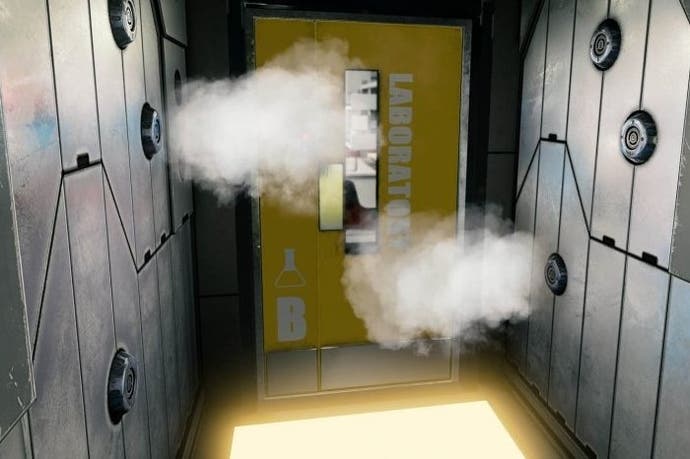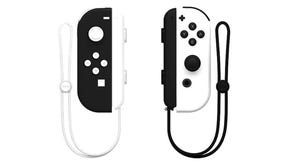The Assembly has a few good ideas for settling virtual reality headset sickness
Comfort controls, anyone?
The Assembly, a virtual reality game due out alongside the three major virtual reality headsets, has a couple of extra control schemes designed to settle the simulation sickness a small number of people suffer when they play VR video games.
The Assembly is a virtual reality adventure game by nDreams, the UK developer best-known for its work on Sony's virtual world PlayStation Home.
In it you play two characters, each from a first-person perspective, who unravel a conspiracy while inside a mysterious lab buried beneath the Nevada Desert.
The first level, designed to get players used to the virtual reality experience, sees you being carted into the underground base on a wheeled stretcher. While your character is unable to move, the player can look around with head movement.
I played The Assembly recently at nDreams' offices in Farnborough using the Oculus Rift, and found this opening section didn't cause me any sickness. However, once inside the base, my guts began to gurgle.
In the second section of the game, you play a scientist who begins to question the path he's on. It's a slow-paced affair - like much of the rest of the game, I'm told - but by using a gamepad in combination with Oculus Rift, I was able to move my character around the base with the left thumbstick, use the right stick to turn the camera and look around by moving my head - all at the same time.
Doing this made me feel queasy. Now, I should point out I suffer motion sickness at the drop of a hat, so am more prone to this sort of thing than others, but I'm not alone. nDreams told me a small number of players do indeed suffer simulation sickness - and this is a problem the virtual reality genre is going to face as Oculus Rift, Sony's Project Morpheus and Valve's HTC Vive launch over the next 12 months.
"What we've found is there's a subset of people who, when you use the right stick to turn and you use your head to turn, it's a little uncomfortable," Patrick O'Luanaigh, boss of nDreams, says.
While nDreams' internal playtests showed those who found The Assembly initially uncomfortable eventually got used to its movement, the studio believes waiting for players to sort themselves out isn't the answer. "We can't just say, you just have to be tougher!" O'Luanaigh says.
nDreams' answer to this problem was to add what it calls "comfort controls". These amount to an extra two control methods The Assembly will present to the player during its opening section. So, when you finish your time on the wheeled stretcher and are placed in a cell, the game gives you the option to switch between the various control schemes available.
The control scheme I played The Assembly with is designed for a player who is used to a traditional console control scheme setup, where you use the left thumbstick to move and the right thumbstick to look. One of the comfort controls uses the gamepad's trigger buttons to snap the player to a fixed position somewhere else in the environment. From that fixed position you can look around by moving your head, perhaps peering into a cupboard, or leaning back so you can see the ceiling. Then, to move to another fixed position across the room, you press the trigger button again. "It separates the stick and the head and it makes some people feel more comfortable," O'Luanaigh explains.
Another comfort control focuses more on head rotation. Using this control scheme, if you turn your head more than 45 degrees, your body turns with your head, so you do not need to use the thumbstick to look around. This, again, helps alleviate the simulation sickness some get when using thumbsticks to move and look within a virtual reality environment.
But combating motion sickness is about more than control schemes. nDreams has also designed The Assembly to be a manageable, approachable virtual reality experience, which to my mind is a good decision for an independent developer looking to establish itself as a VR specialist at the launch of the headsets.

As a slow-paced adventure game that revolves around exploration, player choice and story, The Assembly doesn't task the player with getting stuck in with combat or anything, really, that requires fast movement. So, even The Assembly's gameplay has been crafted to help avoid making players feel sick.
"We deliberately designed it so you can take your own pace," O'Luanaigh says. "There are no sections where you press a button and you've got 10 seconds to get over there and get through the door before it drops. You can take your time and look around. That helps. If it were a game where you had to run and spring and turn fast it would be more of an issue."
nDreams decided it would be better to create a game that can be played in multiple short sessions to help people get used to virtual reality gaming, which is why The Assembly is divided up into chapters. nDreams' goal is for The Assembly to be a launch title for the Oculus Rift, Project Morpheus and HTC Vive, and so for some it will be their first virtual reality video game experience. The adventure game genre fit the bill.
Simulation sickness is something Oculus, Sony and Valve all all acutely aware of, and it's worth noting that the better the hardware becomes in terms of latency and frame-rate, the less pronounced simulation sickness becomes. But there will always be some who find virtual reality gaming nauseating. For those people, myself included, there will be a pressure to just get used to it.
I remember almost throwing up having played a raft of tech demos - including CCP's lovely-looking Eve Valkyrie - on Oculus Rift. A helpful member of the Oculus team told me at the time to think of virtual reality gaming like a muscle. The more you exercise or train the muscle, the stronger it becomes. What I think he was saying is, keep at it. You'll get used to it.
Some games, though, will be easier to use to train your VR muscle than others. Imagine WipEout played with a virtual reality headset - that's Radial-G. I played it at EGX Rezzed in March and found it thrilling, but after 10 minutes I was ready to puke.
O'Luanaigh compares the move to virtual reality to previous shifts in video game control schemes. "I'd been using arrow keys for Doom, then suddenly there's a mouse for Quake and it's like, whoa this is really horrible," he remembers.
"I kept looking up at the sky and down at my feet and I thought, this is a horrible experience, I'm never going to like this at all. This is just weird. But you got used to it."
Then there was the arrival of the console shooter dual-stick control scheme.
"That dual stick FPS control system has become a real standard on console now and everyone is used to it. But the first time it was there, it was weird and different and took a lot of learning. There are a few similarities with VR and we're just going to get better and better at that over the next few years."
For those with motion sickness problems, perhaps slow, considerate virtual reality games such as The Assembly will make for a good start.












